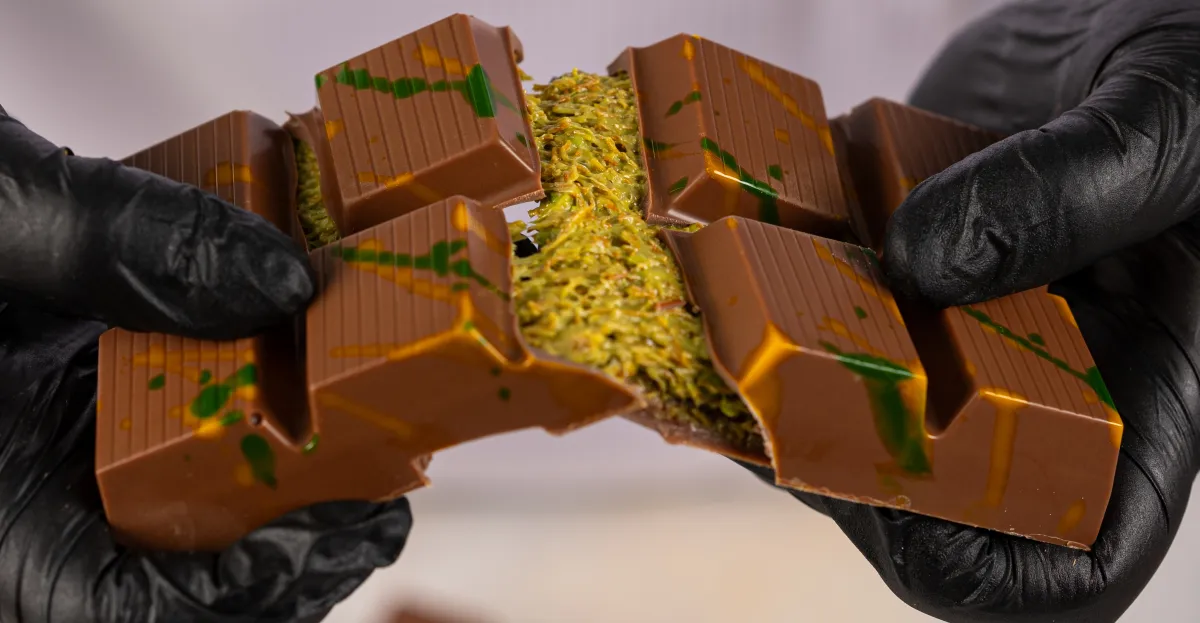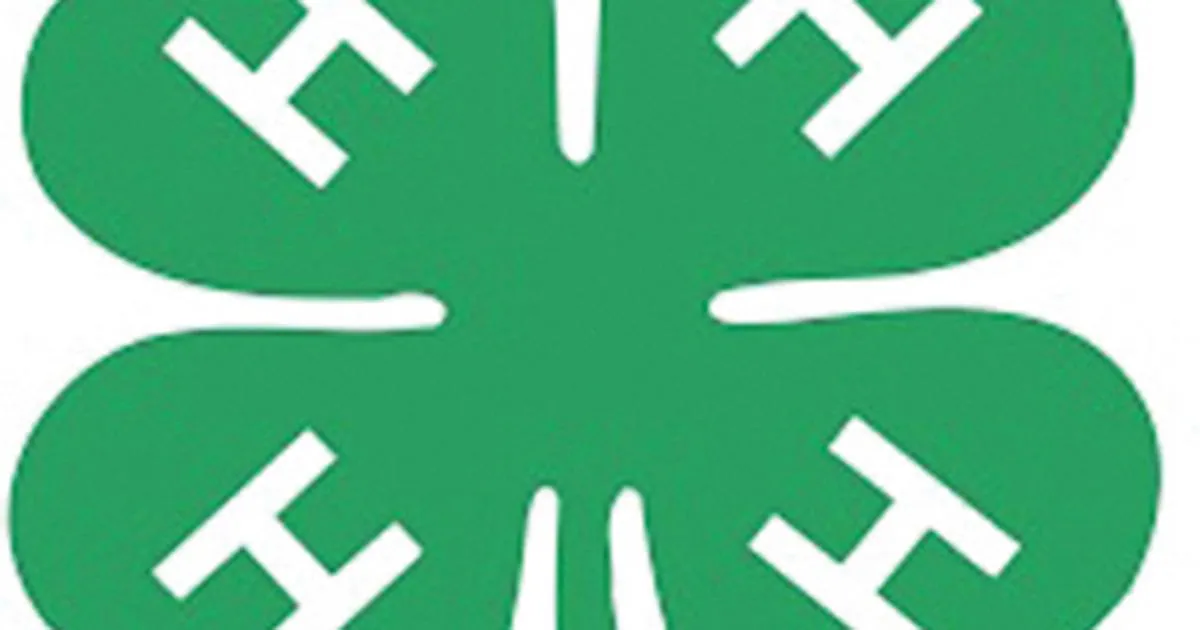
A Vox reader asks: Why is Dubai chocolate suddenly everywhere?! My husband and I have noticed that we suddenly see it everywhere from small town ice cream shops, national chains, grocery stores — and it appears to be across the country. Since we are DC people, our brains immediately went to wondering whether there was a specific corporate or political force behind it. Is the UAE government promoting it? Is there a company pushing it? Would love to know!
A suddenly ubiquitous delicacy from a futuristic city seems like the subject of an online conspiracy. This is the mystery that has surrounded Dubai chocolate since it arrived on the global food scene, showing up in grocery stores like Trader Joe’s and Costco, as well as on TikTok, over the past year.
When did Dubai become known for its chocolate? And what makes chocolate “Dubai”? Is this an export being pushed by the United Arab Emirates? Why is it suddenly available near the checkout at every grocery store? Why are people craving green, crunchy mush?
Like many blink-and-you-miss-it trends in the era of TikTok, the origins of the Dubai chocolate craze aren’t as mysterious as they may seem. Still, the sheer demand for a product so extreme in its combination of ingredients, marketing push, and price tag remains a bit puzzling. That confusion might be what makes it the most fitting trend for our TikTok-addled age.
Sign up for the Explain It to Me newsletter
The newsletter is part of Vox’s Explain It to Me, where we tackle a question from our audience and deliver a digestible explainer from one of our journalists. Have a question you want us to answer? Ask us here.
The ultimate TikTok dessert
Dubai chocolate may be the main character of 2025, but it’s been around for a few years now. The bars were invented in 2021 by Sarah Hamouda, a British Egyptian living in Dubai, during her pregnancy with her second child. Her cravings led her to create an indulgent smorgasbord of a snack: a chocolate bar filled with pistachio cream; tahini; and her beloved childhood dessert knafeh, which is a traditional Middle Eastern pastry made from shredded phyllo, soft cheese, and date syrup.
In 2021, she launched her company Fix Dessert Chocolatier, selling the unique chocolate bars under the name “Can’t Get Knafeh of it.” In 2023, the brand experienced its initial burst of virality after it sent the bar to some local influencers, including Ukrainian creator Maria Vehera, who posts mukbang-style content. In her video, which now has over 100 million views, she cracks open the chocolate bar ASMR-style, showing off its gooey contents and dipping it into even more pistachio filling.
The clip is kind of gross, with Vehera consuming the messy dessert like a toddler. Still, orders for the chocolate instantly skyrocketed. And brands, catching wind of the novelty treat, rolled out their own imitations. Swiss chocolatier Lindt sells its own Dubai-style chocolate bar, made in Germany. The British grocer Lidl launched its own knockoff in March. Crumbl Cookie, of course, dropped a limited-edition Dubai chocolate brownie in August.
The price point, both for the OG bar and its copycats, is pretty steep due to expensive ingredients like pistachio and the fact that its production is so labor-intensive. As Tastewise CEO Alon Chen told the Guardian, the bar “cannot be made at a large scale” because of the “fragility and crispiness of knafeh,” which requires “a lot of technology on a large production line” to properly prepare the dessert. A six-pack of large bars from Fix costs $120, and a Lindt bar costs $15.
Still, for anyone who enjoys the ingredients that make up Dubai chocolate, it’s an attractive product. If you have a giant sweet tooth — it’s very sweet — it arguably tastes good. Yet, that only seems to be part of the reason people are flocking to it.
Professor Sarah Montano, who studies retail marketing at the University of Birmingham, says many of the consumer trends we see are driven by a “desirability to be seen trying or owning the product.” Likewise, half the experience of Dubai chocolate seems to be possessing and, naturally, posting it. The bar is arguably a sloppy visual and even auditory spectacle, seemingly designed to satisfy mukbang-watchers or anyone who’s stimulated simply by looking at a mix of eye-popping colors and textures. That is to say, it’s ideal for the “brain rot” internet, where any attention-grabbing yet low-quality content can thrive.
“Part of the appeal is the nature of Dubai chocolate as offering a reveal,” said Bettina Makalintal, a senior reporter at Eater. “The crunchy, colorful interior feels really perfect for video, because people are surprised to see what’s inside, and it offers a kind of before and after.”
The treat has also become a surprising status symbol. In many ways, the chocolate is luxury-coded. There’s the limited supply and the expensive price point. There’s an image of opulent living in the chocolate’s namesake. Makalintal says the “idea of the chocolate being foreign and imported adds to the allure,” and its ingredients do, as well.
“Pistachios, more than other common nuts, seem to confer a sense of luxury, while also seeming more approachable and interesting than something like a macadamia nut,” said Makalintal. “Overall, we’ve been seeing the creep of the idea of ‘quiet luxury’ into groceries and what people want to buy, the rise of the Flamingo Estate brand being an example.”
Yet, there’s nothing sophisticated or aspirational about the snack that’s essentially junk food. While the “quiet luxury”/”old money” trend is defined by a natural, minimalist look, the Dubai chocolate bar is all about excess and artificiality. It’s an appropriately ostentatious export for a city that foregrounds its wealth, but it also speaks to the extreme nature of everything Gen Z is procuring right now.
Is Dubai chocolate rotting our brains?
Along with other trendy commodities — like Labubus, matcha lattes, even singer Benson Boone — Dubai chocolate has become the subject of some bizarre memes on TikTok. In some cases, users post photos of themselves looking vacant, even possessed, behind an overlay of buzzword salad. “Dubai chocolate-covered Labubu for dinner with a moonbeam ice cream matcha in a Stanley Cup in Cupertino while wearing my Shein hoodie and watching low-exposure slideshows of EOS lotion,” read one.
These memes seem to be evidence and satire of a current brain rot epidemic. I’m not referencing Skibidi Toilet or AI animals with fake Italian names — intentionally created “brain rot” memes that are popular with Gen Alpha. Rather, it seems like people are experiencing a feeling of mental decline by consuming, if not just being constantly exposed to, a number of uncanny and aggressively marketed trends this year. These memes often lead with Dubai chocolate, arguably the least familiar and most random product out of all these examples.
In a piece for the New Yorker, Kyle Chayka considered Dubai chocolate to be a part of a broader phenomenon he labeled the “IRL brainrot aesthetic.” He mentioned Labubus; sea moss Erewhon smoothies; and numerous matcha-colored items, including the gooey interior of Dubai chocolate. “These products seem to be coalescing now into a new mood board of Gen Z-and-younger life-style aspiration, representing a horizon beyond the advent of generative A.I., vanity chemical modification, and digital-first reality,” he wrote. “The ugliness is a feature, not a bug.”
A subset of Dubai chocolate videos on TikTok throws this assertion into sharp relief. For every video of an influencer effortlessly pulling apart the chocolate bar to reveal a perfectly slimy substance, you can find bloopers of users cracking its shell just to find a dry, poop-colored filling or barely any cream at all. With that, the disappointment of consuming for consumption’s sake is immediately exposed.



